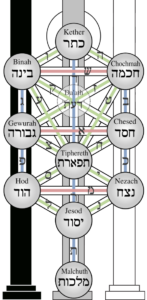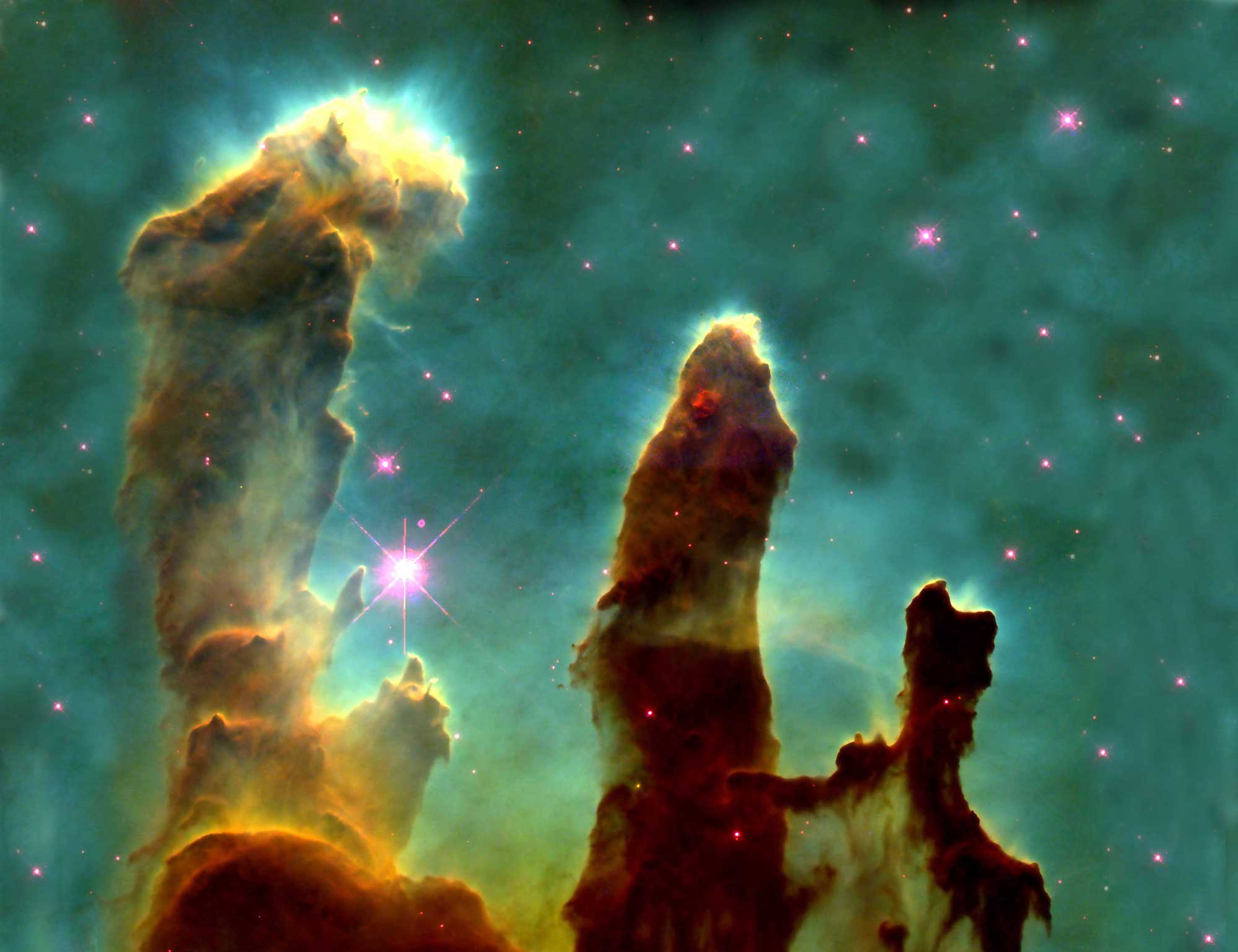One of this blog’s first posts, Indra’s Net and the IGM, described a surprising parallel between a Buddhist myth and recent findings in cutting-edge cosmology, the branch of physics that explores the creation of our universe. The post ended with this question: What happens when metaphors become measurables?
Subsequent posts have also explored ways modern science seems to agree with ancient spirituality. Are these just poetic interconnections, or might creative intuition deserve the same practical respect we give scientific observation?
Today I found a particularly enchanting example of this question:
In Kabbalah, Jewish mysticism, God is described as having 10 characteristics. These characteristics are called sefirot—Hebrew for “jewels.” The sefirot are arranged in three vertical pillars, as illustrated in this diagram:

The three pillars have names: Mercy and Judgment on the ends, and Harmony in the middle. It’s taught that God’s creative energy travels down these pillars as it descends from heaven to Earth. Each pillar contributes the quality for which it’s named, helping along the transformation from pure spirit to physical matter. The resulting creation is balanced and complete: mercy and judgment, harmonized.
The pillars can be thought of as factories—using divine light as their raw material, they produce our world.
Contemporary cosmology also offers an explanation for how creation occurs, and it also involves factories of sorts—in this case, stars.
Stars are made of highly pressurized clouds of hydrogen gas and galactic dust. As a star forms, its hydrogen atoms collide, fusing into helium. The helium atoms then collide, fusing into carbon and oxygen. A cascade of collisions and fusions continues, as elements combine to form heavier elements, and heavier elements, etc. Eventually the weight and energy of all these chemical elements cause a star to become so pressurized it explodes, blasting the elements it’s created deep into space, where they eventually coalesce into new stars, planets, and life.
In 1745 a Frenchman named Jean-Philippe de Cheseaux discovered a cluster of faraway stars, now called the Eagle Nebula. In 1995 the Hubble Space Telescope photographed a region of the nebula in which densely packed interstellar gas and dust has formed three vertical columns. These columns are particularly fertile star factories. They’re popularly called “Pillars of Creation.” The famous photo is this blog’s featured image.
So… Kabbalah mythologizes three columns of sefirot that process divine light into physical matter while cosmology discovers three “Pillars of Creation” that birth stars and all the chemical elements they engender.
The question again: What happens when metaphors become measurables?



you have probably worked with texts of Harold Bloom and John Brockman what brings us to a quiet irony: considering the whole history of eastern-western knowledge, what measure is not a metaphor?
i’m not a student of kabbalah but when i read in your posts seems to indicate a characteristic related to the quality of these attributes [tree of life] … each instance at [in or on? – i don’t know how to use prepositions of space in a process that does not require that] tree of life is is a latent power (or potential state – Leibniz?) that seems to say that is the upper limit of the metaphor… work in math with the minus infinite and plus infinite … who studies kabbalah seems to study the characteristics of the infinite and measure them with metaphors…
is rather late and i’m just thinking too much
“What measure is not a metaphor?” Exactly!
So often we mistake the map for the territory, which is why I carefully titled this blog POETIC INTERCONNECTIONS. Descriptions of reality are always interpretations, and thus, in a sense, artistic creations. As such, they fall prey to the same idealism and idolatry as misunderstood art.